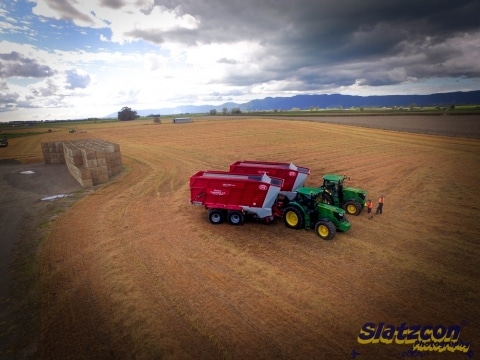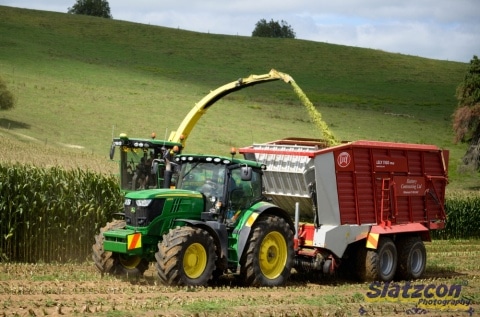Silage
Please inform us of any hazards on your farms, so you can provide us with a safe working environment and we can do the same for our staff.
To make it the best for you we can:
Mow
Mower conditioners that help with crop drying and reduce contamination in silage.
Ted
7.7m every pass.
Rakes
Rakes that reduce soil contamination in your silage or hay and follow contours.
Bulk Grass Silage
John Deere Forage Harvester, Loader Wagons, JCB435S for stacking.
Maize Harvesting
With John Deere Harvest Lab to analyse the crop as it is harvested
Baling
Round and Square (with Multibale capabilities) Chopped if desired.
Inoculant application- to improve the quality of your feed (for bales and bulk silage).
Conventional Hay Baling
Keeping the tradition going, discuss picking up too.
Silage Fermentation
For good silage to be made a rapid drop in pH is required, down to a level where there will be no butyric fermentation.
There are 2 phases in making silage:
Phase One
The first stage is Aerobic Respiration, where the oxygen available is turned into sugars and the proteins are turned into energy, this is where the heat is produced and bacteria are increasing in numbers.
Sugars and proteins are lost from silage when it is left too long in the field or not covered in the stack or bale; if they are lost during this process they are not available for the cows/stock later on.
It is really important to compact properly and cover silage quickly to remove the oxygen which is vital to respiration losses.
Phase Two
The second stage is Lactic Fermentation, where once the oxygen has been all used up then the anaerobic bacteria get busy, they only work when there is no oxygen around. As they multiply the bacteria turn the sugars into the all important lactic acid which results in a drop in the pH level, therefore preserving the silage, making it stable and preventing the unwanted butyric fermentation.
If the pH is not low enough for the silage to become stable, then the dreaded butyric fermentation will occur, and this will result in the breakdown of nutrients of the silage and the finished product will be far less palatable for the cows/stock, the dreaded smelly silage. If the pH of this silage was to rise again from butyric fermentation due to a reduction of lactic acid and increase in ammonia, it makes the stack/bale more suitable to further butyric fermentation.
One way to assist in dropping the pH quickly in silage is to apply Bacterial inoculants, which contain a large number of lactic acid bacteria which increases the production of lactic acid in the silage so that the pH level reduces quickly to a stable level and the silage will be preserved.
But a handy tip to remember is that no amount of additive can improve the quality of silage that started as poor quality pasture, is contaminated with soil, had substandard harvesting or compacting methods.
At Slattery Contracting Ltd we are able to offer inoculant application on all types of silage that we make, not only for stacks through our loader wagons, but also on both our Square and Round Bales.
Bale Stacks
After all the time and effort that goes into making silage bales here are a few tips and tricks when it comes to stacking the bales:
- Location – consider what is above, below and to the sides of the stack. Building a stack of bales under trees can lead to bales being pierced by twigs and sticks, and animals clawing their way over the bales.
- Fencing the stacks off – we have had experiences of farmers not fencing the area off properly and letting young stock into the paddock to nip off the regrowth, followed quickly by a call to us to rewrap the bales, as the stock have decided the silage (plastic and all) was tastier than the pasture.
- Keep away from gateways and thoroughfares – consider carefully the width of vehicles going in and out of the paddocks and how your paddock is accessed.
- Tape up any damage immediately to prevent damage to the bales
- Move with bale clamps, not forks. The seal of plastic is not broken and air is not forced into the bale causing wastage.


